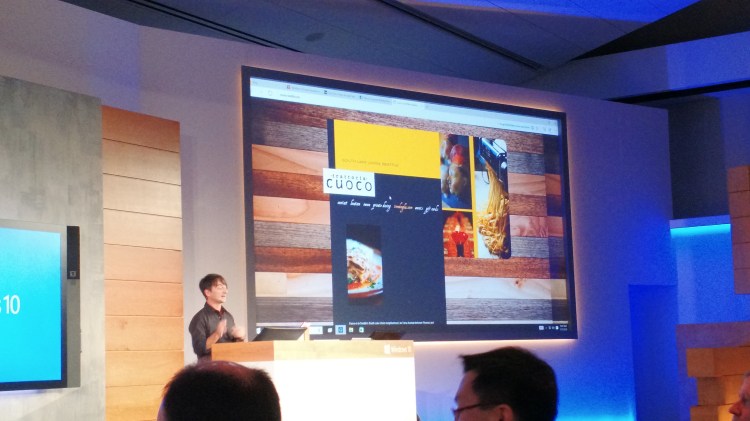Microsoft announced a major change to its browser strategy today: Only Project Spartan, the company’s new browser shipping on all Windows 10 devices (smartphones, tablets, PCs, and so on), will feature the company’s new rendering engine. Internet Explorer will still ship with Windows 10, but Microsoft says it “will remain fundamentally unchanged from Windows 8.1” and will use the legacy engine exclusively.
This is a big adjustment following the browser’s announcement in January, when Microsoft laid out plans to use the new rendering engine to power both Project Spartan and Internet Explorer on Windows 10. Both browsers were supposed to be able to switch back to IE’s old Trident rendering engine when they encountered legacy technologies or certain enterprise sites.
This may be a bit confusing to Windows Insiders, the official name for Windows 10 testers, since IE currently features the new rendering engine in the latest Windows 10 builds (it can be activated via the “Enable experimental web platform features” setting in about:flags). That will be changing with the next build, however, when Project Spartan is finally expected to be made available for testing.
Microsoft explained that it was forced to reconsider its strategy for three main reasons:
- Project Spartan was built for the next generation of the Web, taking the unique opportunity provided by Windows 10 to build a browser with a modern architecture and service model for Windows as a Service. This clean separation of legacy and new will enable us to deliver on that promise. Our testing with Project Spartan has shown that it is on track to be highly compatible with the modern Web, which means the legacy engine isn’t needed for compatibility.
- For Internet Explorer 11 on Windows 10 to be an effective solution for legacy scenarios and enterprise customers, it needs to behave consistently with Internet Explorer 11 on Windows 7 and Windows 8.1. Hosting our new engine in Internet Explorer 11 has compatibility implications that impact this promise and would have made the browser behave differently on Windows 10.
- Feedback from Insiders and developers indicated that it wasn’t clear what the difference was between Project Spartan and Internet Explorer 11 from a web capabilities perspective, or what a developer would need to do to deliver web sites for one versus the other.
In other words, the company was overcomplicating the situation. Shipping two browsers in Windows 10 will already be confusing for many users, and because IE is aimed at just enterprises (something Microsoft confirmed in January), there’s no reason that Project Spartan should duplicate any of its functionality. Furthermore, ensuring IE does not have access to the new rendering engine means that users will be less likely to use the browser (since it will work properly with fewer and fewer sites), which is exactly what Microsoft wants.
As the company explained, this simplifies the role of each browser in Windows 10. Project Spartan will be the default browser for all Windows 10 devices, with a focus on giving developers a proper experience (no document modes or compatibility views) and offering consumers unique features like the ability to annotate on web pages, distraction-free reading, and Cortana integration. Internet Explorer will be strictly for any legacy scenarios that may occur, and enterprises with a large numbers of sites that rely on old technologies can choose to make IE11 the default browser via group policy.
A new Windows 10 build with Project Spartan is expected to arrive sometime in April. At that point, Microsoft said, the new rendering engine will be removed from IE.



